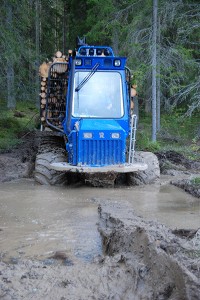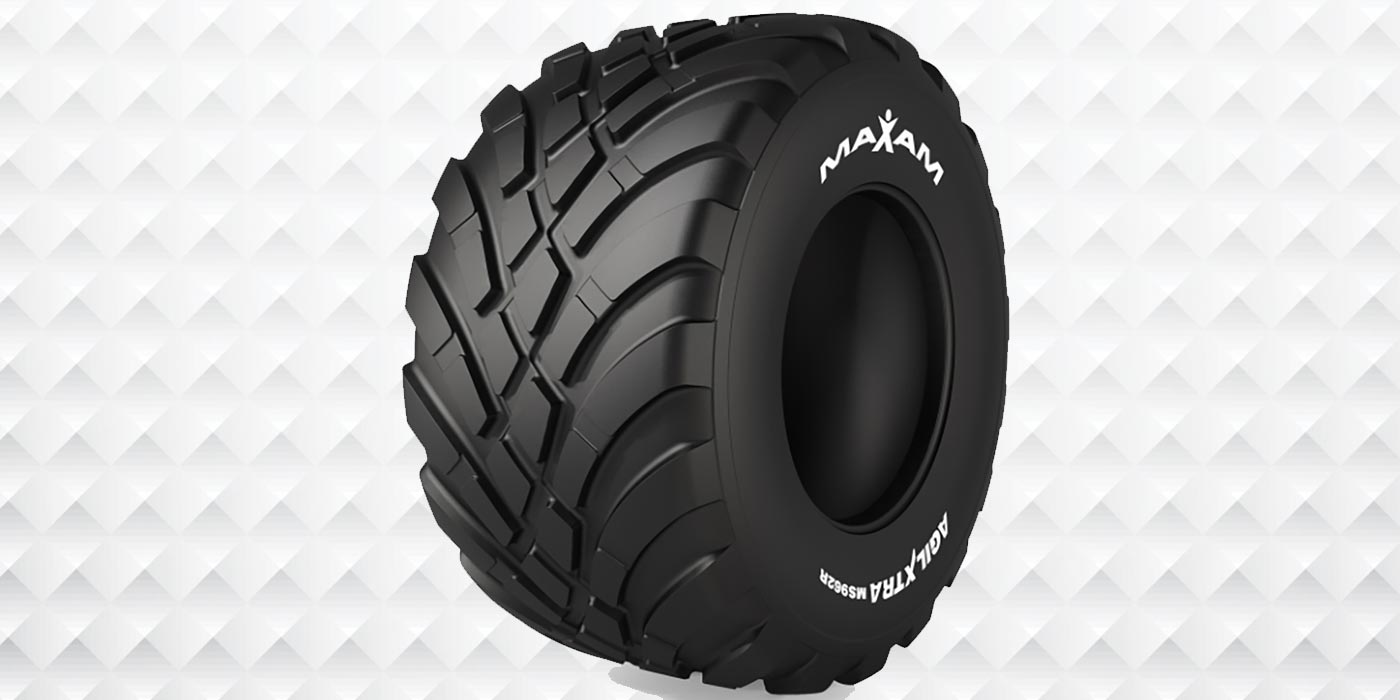Like many other specialty tire segments, demand in the forestry tire market is cyclical. With the demand for logging often echoing the economy, tire demand fluctuates as machines either sit or run.
Currently the forestry industry is on a slight uptick, which is good for tire dealers who service this niche segment.
“With some very good signs in domestic construction, there are reasons to be optimistic for a few years. If fuel prices continue downward and/or hold, that too will be a very good sign for loggers,” says Jim Enyart, technical support manager for BKT USA.
Terry Goodwin, national forestry manager for Alliance Tire Group, is also optimistic about the future noting, however, that forestry is a “volatile business.”
“I am optimistic about the future of the forestry business, but with the realization that the people who succeed today and in the next few years are going to be those who look at every aspect of their business – including their tires – to make sure they are getting the best possible return on their investment,” he shares. “There’s no room anymore for people who just get out and do what their daddy did.”
Some positives for the industry include steady demand in the paper and pulp industry as well as the increased demand for lumber as the housing market recovers, the tiremakers say.
Brent Murray, sales manager for Titan International, points to an increase of activity by the equipment manufacturers and sales of refurbished machines as a good sign, too.
“North American sales of new equipment in the industry is up 10% and in the U.S. it is up 15% to 18%,” he shares.
While new equipment sales create demand for more OE forestry tires, an increase in used and refurbished equipment sales creates demand for replacement sales.
“In many cases when a customer can’t afford a new piece of equipment and he’s considering an updated refurbished or used piece of equipment, he will ask for new tires to be put on to the equipment and rolled into the financing of that piece of equipment,” Murray says.
Working Hard
The forestry industry is demanding. Loggers work in harsh environments, from rocky hillsides to muddy and swampy forests. Operations are often secluded from the nearest roads, and companies are working on tight deadlines from the mills. To make it in logging industry requires hard work.
It is understandable then that loggers expect their equipment and tires to work just as hard as they do. The logging companies are looking for tires that can keep their machines moving despite the harsh conditions in which they work, tiremakers say.
“The No. 1 thing that a logger is really looking for is minimizing their downtime,” says Titan’s Murray. “They literally want tires that are durable, with reasonable wear rates, and obviously at a fair price. They just can’t afford downtime in the woods.”
Alliance’s Goodwin agrees that downtime is a major concern for loggers.
“There’s no time for downtime. Every minute on the job has to be productive, and every machine has to be contributing to the bottom line. Good tires have a significant impact on that,” shares Goodwin.
“Downtime is extremely expensive, so tires have to stand up to the punishment they receive and keep on working,” he says.
Since downtime is so detrimental to the logger, companies are looking for tire dealers who can be solid business partners.
To help meet loggers needs, Goodwin says tire business is all about service.
“Make sure your customer knows what his options are, understands how investing in a particular tire will deliver a positive return on investment, trusts that the tire and the dealer will be there when he needs them, and doesn’t have to wait for repairs or deliveries,” he says. “That requires well-trained staff, a well-stocked dealership, and service trucks that can get to the customer wherever he is. It’s not easy and it’s not for the weak-hearted.”
Titan’s Murray agrees and believes the most successful tire dealers are committed to the forestry industry.
“They have to have the proper service truck and tools, they have the properly trained people, and they have to be a servicing dealer for that logging account,” he shares. “They’re not just running out there dropping off a tire on a job site. They’re going out there. They’re mounting the tire. They’re doing switches. They’re doing repairs. Whatever is needed for the tires and wheels, they’re doing.”
The tiremakers all advise tire dealers to be aware of what machines are running at each site and keep tires and wheels in stock for those vehicles.
In order to best serve forestry clients, tire dealers must also educate themselves in what tires are best for certain applications and machines. OEMs are a good source for application and technical information, but the customer and their experiences are usually the best teacher.
“Every application is special and needs to be evaluated for the terrain and underfoot conditions,” notes BKT’s Enyart.
Murray shares that in rocky and hilly forests, cut resistance is more important to the logger than flotation in many cases. On the flip side, in swampy environments flotation and wide base tires are preferable, he says.
Alliance’s Goodwin shares that when it comes to skidders, tires are going to be all about torque and traction. Harvester and CTL tires, however, need to carry heavy machinery with a light footprint to protect the soil, all while being stable enough to handle load shifts as the machine operates, he says. Dozers, log trucks and other road building machinery all require other specialized tires, too.
Consistent Technology
Unlike many other tire categories, bias-ply tires are still king in the forestry industry. “Bias-ply tires are still important to the forestry tire industry, largely because of the stiffness of their sidewalls. Sidewall stability is extremely important in keeping tires securely mounted on high-torque machinery and on sloping or uneven terrain,” Goodwin says. “The straighter sidewalls of bias-ply tires also reduce the chance of pinching and puncture damage during operation.”
While some companies provide radial tires, much of the forestry industry has been slow to adopt these tires.
“I think the perception in the forestry industry is that a bias tire once injured, especially if a severe injury occurs, can still be repaired or salvaged keep running it,” Titan’s Murray. “It’s just been the proven product in the past and it’s a comfort level issue.”
“At this point still a radial tire has not been accepted by the market,” he says.
Historically, tubes were used in many forestry tires but as technology improves the majority of tires are run tubeless. This does not mean, however, that forestry customers won’t ask for tubes.
“Some customers still use tubes, but they’re not very popular. They’re expensive, heavy, hard to work with, and once they get to sliding around inside the tire, it doesn’t take much to lose a valve stem,” says Goodwin.
BKT’s Enyart notes that tubes are often utilized when “the tire is damaged but is still serviceable with a tube installation.
In the future the size and torque of forestry machines will influence the technology of tires, the tiremakers note.
“With machinery getting bigger and more powerful all the time, we are also working on bead packages that improve tire performance and keep tires properly mounted to the rims. That’s especially important where we have high-torque machinery, or heavy equipment operating on slopes, which can put a massive amount of weight on the bead and sidewall of the tire,” Goodwin says.
Tiremakers are also focusing on producing even more puncture resistant compounds, building stiffer sidewalls for stability and strength, and developing tires with increased floatation to reduce soil damage.













